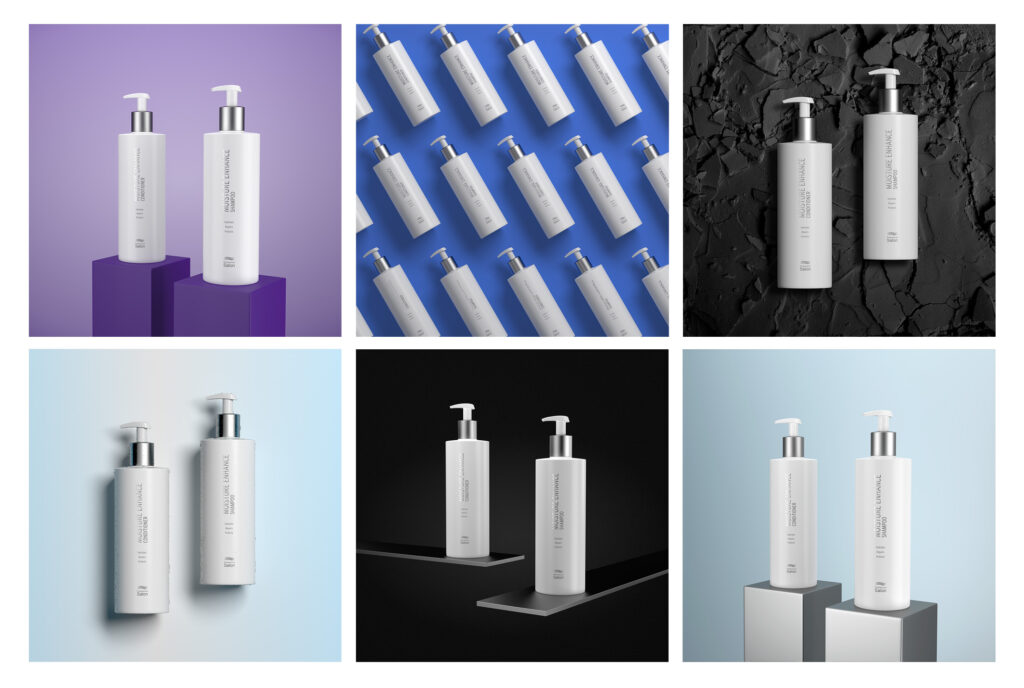
Product photography is undergoing a significant transformation, thanks to Computer-Generated Imagery (CGI). As industries evolve and customer expectations increase, traditional photography methods are increasingly being enhanced or even replaced by CGI. Here’s an in-depth look at how CGI is reshaping the field of product photography.
1. Unlimited Creativity and Flexibility
One of the most significant advantages of CGI is the unparalleled flexibility it offers. Traditional photography often requires complex setups, specialized equipment, perfect lighting conditions and extensive retouching. CGI, on the other hand, allows for the creation of highly realistic images without these constraints. CGI artisits can manipulate light sources, textures, and environments with precision, crafting images that would be challenging or impossible to achieve through conventional means.
For instance, a furniture company can showcase a new sofa in various settings—modern, rustic, or minimalist—without physically moving the product. This ability to visualise a product in multiple contexts enhances its appeal and helps consumers make more informed decisions.
2. Cost-Effective Production
Traditional product photography can be expensive. In addition to hiring a photographer, other factors need to be considered (and costed) These include: renting studio space, transporting products, multiple shoots and extensive post work for complex images. CGI significantly reduces these costs. Once a product is modeled in 3D, it can be reused in various scenes and configurations without additional expenses. This reusability is particularly beneficial for companies with large inventories or frequently changing product lines.
Additionally, CGI eliminates the need for physical prototypes in early stages. Products still in the design phase can be rendered and marketed, allowing for pre-sales and market testing before committing to full-scale production.
3. Enhanced Consistency and Control
Consistency in product imagery is crucial for brand identity. Variations in lighting, angles, and settings in traditional photography can lead to inconsistent visual presentations. CGI ensures uniformity across all images. By using the same 3D models and settings, companies can maintain a cohesive look and feel across their entire product range.
In addition, CGI provides unparalleled control over the final image. CGI artists can tweak every aspect of the scene, from the exact hue of a product to the reflections and shadows it casts. This level of control ensures that the final images perfectly match the brand’s vision and marketing goals.
4. Rapid Changes and Updates
In today’s fast-paced market, the ability to quickly iterate and update product imagery is a significant advantage. With traditional photography, updating images for a product line could mean reshooting and re-editing, a time-consuming process. CGI allows for rapid modifications. Need to change the color of a product? Adjust the 3D model. Launching a new feature? Add it to the existing model and re-render.
This agility is particularly advantageous where trends change rapidly, and products are frequently updated.
5. Immersive and Interactive Experiences
CGI is not limited to static images. It extends to creating immersive and interactive experiences. Virtual reality (VR) and augmented reality (AR) are becoming integral parts of the shopping experience. Consumers can visualise how a piece of furniture fits into their living space or how a pair of shoes looks from every angle. Models can be animated too, from a simple 360 spins through to a complex explainer videos. This interactive element enhances engagement and can significantly boost sales.
6. Environmental Sustainability
The environmental impact of traditional product photography is often overlooked. It involves transportation, material use, and waste generation. CGI, by contrast, is a more sustainable option. It reduces the need for physical prototypes and minimizes waste associated with photoshoots. As companies strive to adopt more eco-friendly practices, CGI presents a viable alternative that aligns with sustainability goals.
Wrap up
CGI is significantly impacting product photography. Its flexibility, cost-effectiveness, consistency, and ability to create immersive experiences are reshaping how products are visualized and marketed. As technology continues to advance, the integration of CGI in product photography is set to become even more sophisticated, offering new possibilities for creativity and innovation. Companies embracing this shift are not only staying ahead of the curve but also setting new standards in the digital age of marketing.
Please get in touch if you’d like to learn more or talk about a specific project.
